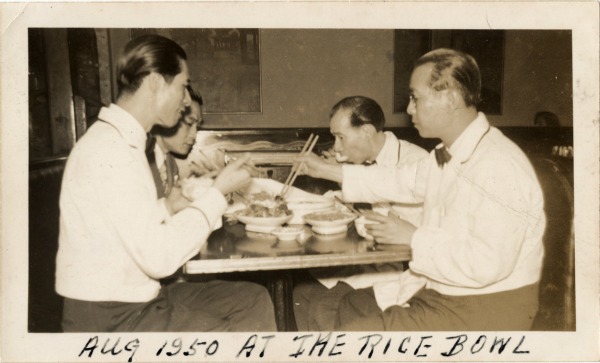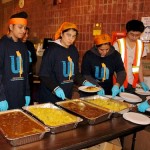New York City’s bygone era of milkmen, wandering produce sellers, automats, and soda fountains comes to life in an audio project by journalist Anne Noyes Saini, the co-creator of City Spoonful. Many of the older New Yorkers Saini interviewed for Forgotten Foods of NYC are immigrants. Listen to the conversation as longtime New Yorkers recall family cooking traditions, foods from home lost to immigration, and much more.
The story of Forgotten Foods of NYC by Anne Noyes Saini
New York is famous for its lively dining culture which has replaced cooking for many in the city. Some of us even take to the Internet to document our restaurant explorations.
So when I started work on Forgotten Foods of NYC I was surprised to learn that New Yorkers weren’t always so restaurant-obsessed.
I wanted to learn how the city’s foodscape has changed over the years, through interviews with New Yorkers in their 60s, 70s, and 80s. I expected to hear first-hand accounts of long-shuttered automats and soda fountains, or nostalgic tales of an era when chop suey and spaghetti were considered “exotic.”
But I practically had to beg people to talk about restaurants. “Aren’t there favorite restaurants, now closed, that you miss?” I would prod, thinking longingly of my favorite source for Chinese dumplings, closed last year by DOH decree. “What restaurants did your family usually go to?”
For the people I interviewed, eating out was a rare luxury. This was especially true for those who remembered the 1930s and 40s—but also for those who were raised during the more prosperous 1950s and 60s.
“We did not go to elegant restaurants ever,” Hilda Baumol, 90, of Battery Park City, recalled. “It was the tail end of the Depression and you didn’t waste your money.”
“I never liked to go to restaurants…maybe once a year,” Olga Colon, 86, of the Lower East Side, told me. “We didn’t have the money. We couldn’t afford it.”
Instead, many were quick to recall family dishes, rather than restaurant meals: a grandmother’s cookie recipe—never written down and now lost; a stuffed cabbage recipe ignored by the family’s younger generation—about to be lost.
“That stuffed cabbage was my all-time favorite,” Bonnie Sue Pokorny, 66, of Forest Hills. “It’s a very involved process… and probably I’ll never make it again.”
The many immigrants I interviewed for the project told me vivid stories about foods from home that have never been available—or quite as good—here in New York: fruit picked fresh from backyard trees in the Dominican Republic, whole roasted pig in Puerto Rico, delicate German spaetzle, noodles made by hand for Chinese New Year celebrations in Hong Kong.
“The whole family…would do those noodles…every single one by hand,” Nancy Soong, 90, of Battery Park City, recalled from her Hong Kong childhood. “Somehow it’s different from any noodles I’ve tasted.”
So what are the forgotten foods of New York City? New York’s nostalgic automats and soda fountains do make brief appearances in this series of audio pieces. Mostly, however, these stories center on family cooking traditions and foods from home lost to immigration.
These stories are about food—but they’re also about the experience of aging and immigration in a city driven by relentless change.
Fi2W is supported by the David and Katherine Moore Family Foundation and the Ralph E. Odgen Foundation. Fi2W podcasts are supported in part by the CUNY Graduate School of Journalism and CUNY-TV.




